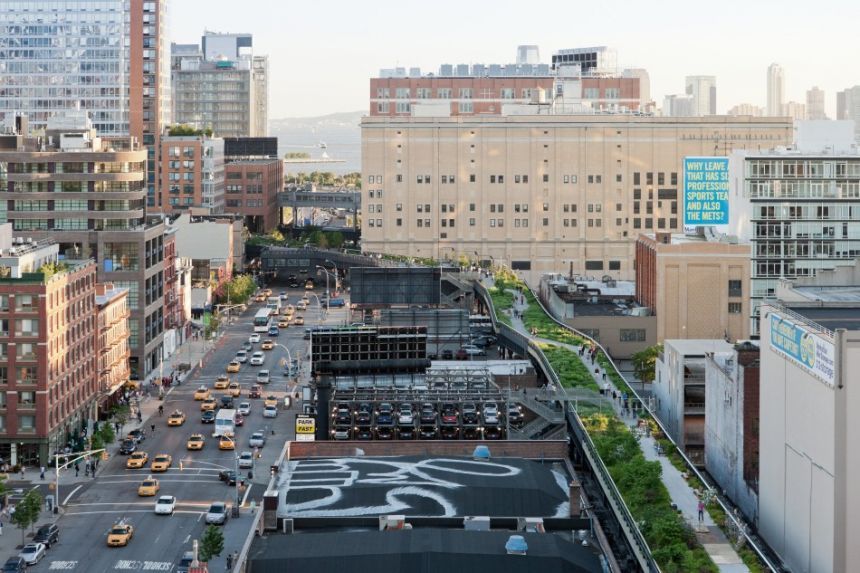Ever since the High Line opened its first section to the public in 2009, this converted rail line in New York’s Chelsea neighborhood has inspired other cities to look at their own obsolete infrastructure in a new light. The conversion of the elevated railway tracks on Manhattan’s West Side, unused since the 1980s, into a spectacular public park that attracts 4 million visitors per year is as tantalizing a model as any.
But like any great urban project, the High Line is very much a product of its own specific time and place. A very particular constellation of people, financial resources, politics, market forces, geography and culture came together to create a singular opportunity. The High Line can never be cloned. But that doesn’t mean it can’t serve as an instructive example of how cities can creatively reframe public space and find the opportunity for beauty and community in unexpected places.
That’s the thinking behind “High Line Talks: Beyond the High Line,” a series of conversations that begins on Monday, June 24. Held on the High Line itself at West 14th Street, these presentations aim to expand and deepen the discussion about the transformative power of initiatives that reclaim underused urban space.
“The High Line gets a lot of attention, but it is just one of many examples of ways that communities are working together to adapt old, industrial infrastructure into public space,” said Robert Hammond, co-founder of Friends of the High Line. “We look forward to using the High Line as a platform for fellow activists and civic leaders from other parts of New York City and beyond to present their big ideas.”
First up in the series is “Beyond the High Line: Transforming Philadelphia,” a discussion of the future of that city’s Reading Viaduct and City Branch rail lines, three miles of abandoned track altogether. The talk will feature Paul Levy, of the business improvement district Center City District, who will present his group’s plan for repurposing one elevated section of the abandoned tracks, and Leah Murphy, of Friends of the Rail Park, who will be talking about how Philadelphia’s vision for the park should expand to include further sections of the tracks that are at or below grade.
As Philadelphia is looking at ways to revive its core, the question of what to do with the viaduct and other tracks has emerged as a defining element of any plan. Levy and Murphy will be presenting their visions of how the adaptive reuse of this infrastructure could potentially transform Center City.
The Reading Viaduct has much in common with the High Line. It, too, is an elevated rail line that fell into disuse in the 1980s and was overgrown with weeds. It, too, has been eyed for demolition. And as with the High Line, citizens have banded together to advocate for its revival.
The viaduct, built in the 1890s during the glory days of rail, could become a defining green amenity for the Center City and Chinatown neighborhoods, says Levy. Not only that, the Center City District group sees such a park as a chance “ to create a unique, mixed-use, mixed-income neighborhood like none other in Center City.”
“I would never look at this as a park in isolation from a larger economic development plan,” says Levy. Today, he points out, the elevated portion of the track has a blighting effect on the surrounding area, and it would be more expensive to demolish it that to improve it as a park.
He says the local community has made it clear that while they admire the High Line, they don’t want a replica of what New York has. “They’re saying, ‘we don’t want a Mercedes Benz,’” he says. “We want something that is authentically Philadelphian, with a gritty, industrial design.”
The other talks in the series will continue and expand on the theme of how open space can impact communities.
On July 15, the featured speakers will be Enrique Peñalosa, former mayor of Bogotá, Colombia, and Majora Carter, founder of Sustainable South Bronx. The topic will be “Building Equitable Cities and Public Spaces,” and Carter and Peñalosa will discuss their own experiences with the intersection of public space and social equity, as well as taking questions from audience members.
On September 23, the talk will be on “Transforming Staten Island.” James Corner, of the firm James Corner Field Operations, and Eloise Hirsh, of the NYC Department of Parks & Recreation, will be discussing the metamorphosis of Fresh Kills — once the biggest and most notorious municipal landfill in the nation — into a giant, multifaceted public park.
All talks start at 6:30pm.

This post is sponsored by Friends of the High Line.

Sarah Goodyear has written about cities for a variety of publications, including CityLab, Grist and Streetsblog. She lives in Brooklyn.
















